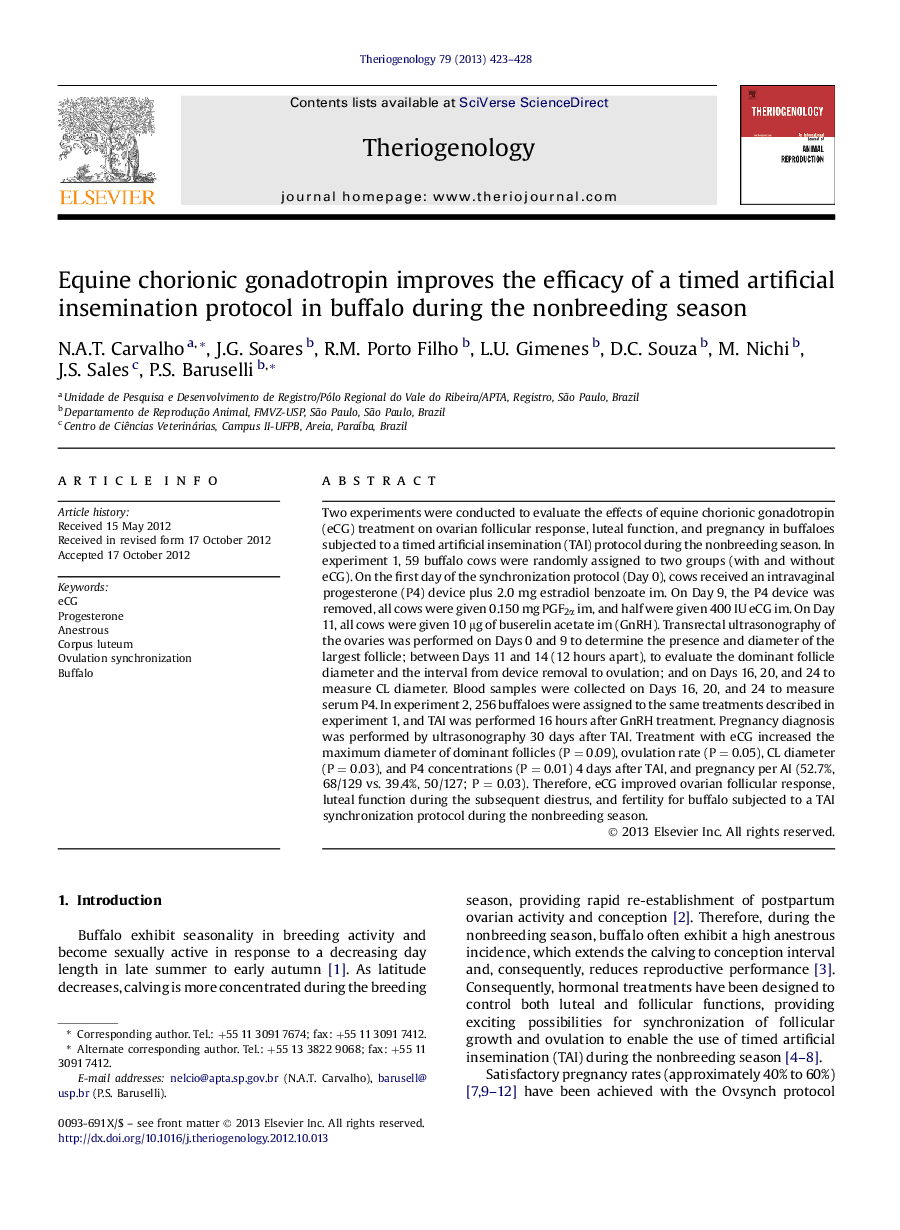| Article ID | Journal | Published Year | Pages | File Type |
|---|---|---|---|---|
| 10892081 | Theriogenology | 2013 | 6 Pages |
Abstract
Two experiments were conducted to evaluate the effects of equine chorionic gonadotropin (eCG) treatment on ovarian follicular response, luteal function, and pregnancy in buffaloes subjected to a timed artificial insemination (TAI) protocol during the nonbreeding season. In experiment 1, 59 buffalo cows were randomly assigned to two groups (with and without eCG). On the first day of the synchronization protocol (Day 0), cows received an intravaginal progesterone (P4) device plus 2.0 mg estradiol benzoate im. On Day 9, the P4 device was removed, all cows were given 0.150 mg PGF2α im, and half were given 400 IU eCG im. On Day 11, all cows were given 10 μg of buserelin acetate im (GnRH). Transrectal ultrasonography of the ovaries was performed on Days 0 and 9 to determine the presence and diameter of the largest follicle; between Days 11 and 14 (12 hours apart), to evaluate the dominant follicle diameter and the interval from device removal to ovulation; and on Days 16, 20, and 24 to measure CL diameter. Blood samples were collected on Days 16, 20, and 24 to measure serum P4. In experiment 2, 256 buffaloes were assigned to the same treatments described in experiment 1, and TAI was performed 16 hours after GnRH treatment. Pregnancy diagnosis was performed by ultrasonography 30 days after TAI. Treatment with eCG increased the maximum diameter of dominant follicles (P = 0.09), ovulation rate (P = 0.05), CL diameter (P = 0.03), and P4 concentrations (P = 0.01) 4 days after TAI, and pregnancy per AI (52.7%, 68/129 vs. 39.4%, 50/127; P = 0.03). Therefore, eCG improved ovarian follicular response, luteal function during the subsequent diestrus, and fertility for buffalo subjected to a TAI synchronization protocol during the nonbreeding season.
Related Topics
Life Sciences
Agricultural and Biological Sciences
Animal Science and Zoology
Authors
N.A.T. Carvalho, J.G. Soares, R.M. Porto Filho, L.U. Gimenes, D.C. Souza, M. Nichi, J.S. Sales, P.S. Baruselli,
